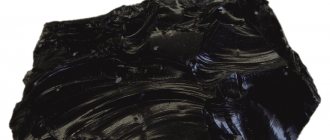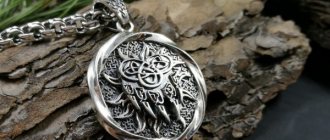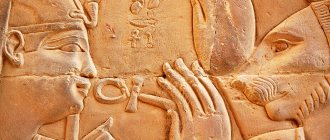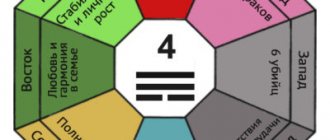| salamander - Greek . — /// — lat . — salarnandra ———— A small amphibious creature resembling a LIZARD, which, according to medieval bestiaries, not only did not burn in fire, but even had the power to extinguish the flame - a belief previously noted by both Aristotle and Pliny. It is usually depicted as a small wingless lizard or dragon, sometimes similar to a dog, jumping out of the flame. A legendary lizard, a natural creature capable of living in fire, making this element habitable and protected. Typically depicted as a small, wingless dragon or lizard leaping out of flames. Sometimes she looks like a dog. Fire element. It is curious that the same ancient idea is reflected in the Alexandrian “Physiologist” and in the book on animals by Timothy from Gaza, whereas usually the descriptions of animals in these works are mutually opposed. It seems that this time the ancient plot suited the Christian interpreter quite well. The thing is that the fantastic property of the salamander perfectly matches the interpretation. In the same row there is also later evidence, possibly related to the “Physiologist”, however, what is important, the ancient tradition is not interrupted. The Physiologist emphasizes the ability of the salamander to extinguish fire and sauna stoves with its nature. This lizard was believed to have a special cooling power. It can be assumed that behind this fantastic performance is the ability of a real lizard (Salamandra salamandra) to release skin secretions in case of danger. The secretions of the skin glands, which salamanders can release voluntarily, are usually milky white in color and have poisonous properties, thus serving as a means of protection for the animal from enemies. At the same time, they protect its skin from drying out, which is of great importance given the highly developed skin respiration of salamanders. In ancient times, there was an exaggerated opinion about the degree of poisonousness of salamanders. The connection between the salamander and the fiery furnace could have arisen as a result of the practice of ancient pharmacists who burned lizards to obtain ash, which is confirmed by the information of al-Biruni. Pliny described the most common species - the spotted or fire salamander (Salamandra maculosa), reaching 18-23 cm in length and distinguished by bright golden-yellow spots on a black background, located in two longitudinal rows along the entire body; the same spots are found on the legs and sides of the animal’s body. Basic values:
|
Antiquity
According to ancient tradition, the salamander does not live in fire, but extinguishes it with its nature. In other words, where you can see a salamander, there is no place for fire. Pliny, not without irony, proposed saving Rome from fires with its help.
Pliny wrote about the belief that the salamander survived fire by extinguishing it with its cold body - a message possibly based on the description of water-loving amphibians called fire salamanders because of their bright black and yellow coloring.
He also states (History, book 10) that the salamander is so cold that contact with it extinguishes the fire.
In book 21, he repeats this again, skeptically noting that if she really had such a property attributed to her by sorcerers, it would be used to put out fires.
Book 11 mentions the winged four-legged animal “pyraust”, living in the flames of the Cypriot smelters; As soon as she finds herself in the air and flies even a little, she falls dead. The myth of this forgotten creature merged with the later myth of the salamander.
Contrary to the statement of St. Augustine, researchers of the nature of animals did not write about the salamander living in fire. For example, Aristotle reports mysterious winged animals appearing in the flames of furnaces. They, unlike the salamander, cannot live without fire.
“In Cyprus, where [copper ore] is burned, the chalkyte stone, if it is placed [in the furnace] for several days, animals appear in the fire, little larger in size than large flies. These [animals] are winged, jump and walk on fire. Both these [animals] and the [mentioned snow] worms die if they are separated: the first from fire, the second from snow. And that some animals, due to their durable composition, can not be burned in fire, this is clearly shown by the salamander: they say that by walking through the fire, it extinguishes it[1].
Aristotle's story about winged animals received an unexpected development. Apuleius in his essay “On the Deity of Socrates” writes:
“It is well known that there are four elements and nature is therefore, as it were, distributed over four vast regions. There are special animate beings - earthly, [aquatic], fiery; Aristotle claims that in flaming furnaces there are some small creatures capable of flying on wings and spending their entire lives in the flame, arising with it and dying with it.”
Book XI of Pliny’s “Natural History” speaks of the winged four-legged animal “pyraust”, living in the flames of the Cypriot smelters; As soon as she finds herself in the air and flies a little, she falls dead.
According to X. L. Borges, the myth about this forgotten creature merged into a later version of the myth about the salamander. Borges's assumption explains the appearance of the winged salamander in Western medieval miniatures. The validity of his hypothesis is confirmed by information from the Byzantine collection “Geoponics” (VI century), where the confusion regarding the salamander and Aristotle’s small animals is clearly presented:
“Amianth is stronger than fire and does not burn out even if it remains in the fire for a long time. In the same way, the salamander - a tiny animal born of fire - lives in fire, and the flame does not burn it[2].
Salamandra, animal lacertae figura, stellatum, nunquam nisi magnis imbribus proveniens et serenitate desinens. huic tantus rigor, ut ignem tactu restingual non alio modo quam glades Salamander; an animal of the genus of lizards, studded with stars, never appearing except in heavy rain, and hiding in clear weather; she has such coldness that, like ice, she extinguishes fire with a touch[3].
Pliny further notes, “mucus flows from her mouth and destroys the hair on the human body. If you anoint the skin on the body, a dark spot will form in this place. The salamander is the most harmful of all poisonous animals. Other animals only harm individuals, but the salamander can destroy an entire nation if it is not guarded against. When it climbs a tree, it poisons all the fruits, and whoever eats them dies, as if from severe cold. Even if a salamander touches the table with its paw on which bread is kneaded, the latter will be poisoned; If it falls into a well, all the water will become poisonous. However, some animals are able to devour this harmful creature, such as pigs, and, probably, the meat of these animals can serve as an antidote to the venom of salamanders. If what the magicians say were true, that is, that this is the only animal that extinguishes fire, and that even some parts of its body are an excellent remedy against fire, then Rome would have carried out a similar experiment long ago.”
Application
The amulet in the form of a fire salamander is mainly quite common among firefighters. Based on the properties of the lizard, which prevent fire damage, representatives of this profession often use an amulet at fire stations, and also apply tattoos of the reptile to their bodies. This symbol is no less common among businessmen, leaders and politicians. A salamander curled into a ring, be it a brooch, earrings, pendant, ring, bracelet or tattoo on an area of the body with limited visibility, helps to avoid disobedience from subordinates, competition, failures and other misfortunes that are characteristic of the dark streak in the life of executives.
Tattoo
A body pattern depicting a fiery salamander helps the owner acquire a number of properties, such as longevity and eternal youth, calmness and serenity.
After applying a tattoo depicting a legendary reptile, a person gains complete self-confidence, stability and courage, firmness and spiritual strength, courage and bravery, indifference, a cold outer shell. The meaning of a tattoo is not much different from the meaning of the amulet itself made of stones or precious metals, but unlike jewelry, this amulet will remain with the owner for life and will be nearby at any time.
Source
Christianity
The early Christian Physiologus calls the salamander a “lizard,” which, however, does not live in fire, but by its natural inclination can extinguish it.
Even if it (the salamander) gets into the stove for heating the bath, this stove goes out
The Physiologus also contains a curious legend that has no practical significance, according to which the salamander is a cold bird (“colder than all other birds”) that lives in the volcano Etna and does not burn. Perhaps this legend is connected with a misinterpretation of the legend of the mythical Phoenix.
Theologians cited the Phoenix as proof of the resurrection in the flesh, and the salamander as an example of the fact that living bodies can exist in fire.
In Book XXI of The City of God by St. Augustine there is a chapter entitled “Can Bodies Exist in Fire,” and it begins like this:
Why would I bring evidence here, if not to convince the incredulous that human bodies, endowed with soul and life, not only do not disintegrate and do not decompose after death, but their existence continues among the torments of eternal fire? Since it is not enough for unbelievers that we attribute this miracle to the omnipotence of the Almighty, they demand that we prove it with some example. And we can answer them that there really are animals, corruptible creatures, for they are mortal, who nevertheless dwell in fire.
With this interpretation, supported by the reasoning of Aristotle, which Cicero preserved in the book “De natura deorum” [“On the nature of the gods” (Latin)], it becomes clear why people were inclined to believe in the salamander.
In the middle of the 12th century, a forged message, allegedly addressed by Protopresbyter John, King of Kings, to the Byzantine emperor, spread throughout Europe. This message, which is a list of miracles, speaks of miracle ants extracting gold from the earth, and a certain River of Stones, and a Sea of Sand with living fish, and a giant mirror showing everything that happens in the kingdom, and a scepter carved from a solid emerald, and about stones that make you invisible or glow in the dark. One of the paragraphs says:
In our area there is a worm called the salamander. Salamanders live in fire and make cocoons, which the ladies of the court then unwind and weave from threads of cloth and clothing. To cleanse these fabrics, they are thrown into the fire.
There is a mention of fireproof fabrics that are cleaned by fire in Pliny (XIX, 4) and Marco Polo (XXXIX). Polo explains: The salamander is not an animal, but a substance. However, at first no one believed him: fabrics made from asbestos were sold under the guise of salamander skin, and they were indisputable evidence that salamanders exist.
The applied use of this mythical animal symbol by Christians is intended to serve as confirmation that the story of the “three youths in the fiery furnace” told in the biblical Book of Daniel is true, since the protection of God is no less powerful than the natural inclination of the animal, in accordance with the words from the Book of Isaiah:
If you walk through fire, you will not be burned, and the flame will not scorch you (43:2).
The salamander was also a Christian symbol of the blameless believer resisting the fire of temptation; sometimes - a symbol of chastity.
BOOKS OF THE RENAISSANCE ERA
salamanders are also called “volcanic”, and this means that less pure, mixed creatures called “arsonists”, “igniters” come from them.
For the uninformed, salamander is just a fireproof gemstone. According to naturalists, there is such an animal, but it is not endowed with the ability to live in fire, but, thanks to its cold-blooded nature and the moisture it produces, it can remain on fire for some time.
Paracelsus (1493-1541) believed that these fiery creatures, by their very nature, cannot communicate with people, unlike water creatures (undines, melusines), which are very disposed towards them.
Leonardo da Vinci believed that the salamander feeds on fire and fire helps it change its skin.
On one of the pages of his Life, Benvenuto Cellini says that as a five-year-old boy he saw a lizard-like creature frolicking in the fire. He told his father about this. He replied that it was a salamander and chopped it off so that the amazing vision, so rarely available to people, would be imprinted in his memory.
Theologians cited the Phoenix as proof of the resurrection in the flesh, and the salamander lizard as an example of the fact that living bodies can exist in fire.
About the salamander. The physiologist says about her that when she gets into a fiery furnace, the whole furnace goes out, and when she gets into a sauna stove, she extinguishes the sauna stove. And if the salamander lizard extinguishes the fire with its nature, then how come some still do not believe that the three youths thrown into the oven did not suffer at all, but, on the contrary, cooled the oven? After all, it is written that “if you walk through fire, the flame will not burn you.” The Physiologist speaks well about the salamander[4].
“The salamander is like a lizard; passing through the fire, it cools and extinguishes it[5].”
“Some animals, due to their durable composition, can not be burned in fire, this is clearly shown by the salamander: it is said to extinguish it by walking through the fire[6].
According to Armenian geography of the 7th century, in Ethiopia, east of the Moon Mountains, there is “a salamander, similar to a lizard, which, passing through fire, extinguishes it [7].”
Just as the compiler of the Physiologist used, as an illustration of the legend of the three youths thrown into the oven, the entertaining story of the eternally icy salamander, and St. Augustine used a similar argument. However, at St. Augustine there is a curious shift in theme: the salamander from a creature that puts out fire turns into a creature that lives forever in the flame. This sets a new perspective, which determined the image of the fireproof salamander in medieval bestiaries. What the author of The Physiologist did not dare to do was done by another Christian writer. In the new cultural space, an inevitable transformation occurs with the salamander: from an animal with an amazing property, it becomes a sign. In Book XXI “On the City of God” St. Augustine has a chapter called “Can Bodies Burn Forever in Fire,” and it begins like this:
“What should I point out so that non-believers can be convinced that animate and living human bodies not only can not be destroyed by death, but can also withstand the torment of eternal fire? They don’t want us to refer to the power of the Almighty in this case, but demand that we convince them with some example. We will answer them that there are animals that, like mortals, are subject to destruction and, however, live in ordinary fire. […] If the salamander lives in fire, as more inquisitive researchers of the nature of animals write, if some well-known mountains in Sicily, for such a long time from ancient times to us, continuously breathing fire and remaining intact, indisputably testify that not everything perishes, what is burning[8]"
Who is the amulet suitable for?
The fire element of the salamander gives the amulet with its image special power. It manifests itself best when the talisman is worn by a Sagittarius. The symbol has a good influence on earth signs. Virgos, Taurus and Capricorns will strengthen their energy if they wear a pendant, bracelet or ring with this ancient creature. A wingless dragon will be useful to courageous people who have power. He will protect them from the machinations of envious people, temptations, and will give them strength in the struggle for leadership.
The emblem with a drawing of a salamander, as a symbol of the fight against the elements, is often used by firefighters and rescuers. And this is not only a tribute to legend or history. The ancient symbol is able to protect a person from fire. Even though it has long been proven that these animals are not capable of extinguishing fires. But no one has canceled the hidden energy of signs, their otherworldly power. So the emblem or pendant is an additional amulet for tamers of the fire element.
Islam
Aristotle's fiery animals, having gotten lost in the labyrinths of other cultures and taking on a different guise, reappear on the pages of Persian cosmography of the 13th century:
“Aristotle says that in the land of the Maghreb there is a place […] where fire constantly burns day and night. An animal resembling a mouse is born from the fire. It is red, like fire, and stands on two legs. When the wind blows over the animal, it turns white. If it enters the fire again, like fire, it will turn red. The location of this animal is in fire[9].
According to Ibn Sina, a salamander is “a reptile similar to the aza'a lizard, with four legs and a short tail. They claim that it does not burn, and that if you throw it into a stove, it will put out the fire. The one who is bitten by it experiences severe pain, a fiery glow in the body and a hot swelling on the tongue, and the tongue becomes stiff and [the person] stutters. [Her bite] causes numbness and trembling; often a round blackening appears on the bitten organ, and it falls off[10].”
Al-Biruni knows the legend about the salamander, but he rejects it:
Salamandira. Dioscorides: this is a type of Sami abras*. Some people [say] a lie about it, that it does not burn in fire, and that is because it has a cooling power. Dioscorides and Ibn Mandawayh: [a salamander] is an animal similar to 'azaya [a type of lizard], with four limbs and a short tail. They think that it does not burn in the fire, but, on the contrary, extinguishes the stove. Another [author]: 'azaya moves slowly and has different colors. I think it's a gavik. Pavel: [a salamander] is an animal that is burned, and its ashes are mixed with medicines that cause putrefaction, so it is suitable for [treating] scabies and baras**'. A substitute for salamander is green 'azaya" (al-Biruni. Book on medicinal substances. 523). * Saam abrasa is a gecko lizard. Compare: Ibn Sina. Canon P. 510. **r Baras - scaly lichen; for more details see: Ibn Sana's Canon. IV. P. 543.
Symbol meaning
Women who use the fire salamander amulet to complete their image or as a personal talisman always look more mysterious, enigmatic, attractive and inaccessible in the eyes of members of the opposite sex, which arouses keen interest in the owner of the lizard.
Modern bioenergeticists, magicians and astrologers also mention the magical properties of this mysterious creature when formulating the meaning of the amulet. It is believed that the fire salamander is the patroness of the element of Fire. It protects the room from fire, and the wearer of the amulet from burns. This talisman also acts as a symbol of perseverance, strength, courage, and virtue. Since ancient times, the salamander has been a symbol of a highly developed intellectual person. This amulet is also interpreted as a sign of chastity, loyalty to traditions and ideals. Feng Shui dictates: the salamander is a symbol of healing, health and longevity. Such a talisman cleanses the room and space from negative energy, creates powerful protection against magic and unintentional evil eye, gives immortality, enhances the owner’s positive energy and cheerful attitude, and helps to pass the tests that come along the path of life with relative ease.
Alchemy
In alchemical symbolism, salamanders are spirits of the element of fire. Born in fire, they are a common symbol (in alchemical practice) of the purifying properties of fire and sulfur.
The Sicilian physician Empedocles from Agrigentum formulated the theory of four “roots of all things,” the separation and union of which, caused by Enmity and Love, form the history of the universe. There is no death, there are only particles of “roots”, which the Romans would later call “elements”, and they are separated. These “roots” are fire, earth, air and water. They are uncreated, and none of them is stronger than the other. According to this teaching, equality of all four elements was required. If there are animals on earth and in water, there must be animals that live in fire. The prestige of science required that salamanders exist.
The four elements, which make up and support the life of the universe and still continue to live in poetry and folk fantasy, have a long and glorious history, wrote Theodor Gompertz.
In the same way, the salamander preserves its body from the consuming flame by expelling juices from its body.
The use and meaning of the salamander amulet - who is this symbol suitable for?
The salamander is a mysterious, enigmatic, extraordinary creature. Therefore, this lizard has acted as a mystical amulet and talisman for many centuries. Ancient legends describe the supernatural capabilities of a dragon without wings and unusual properties. In old German legends, the salamander was sung as the material embodiment of the spirit of Fire and was credited with the ability to pass through flames, stop fires, and tame the fiery element. In Slavic legends, the legendary amphibian is the direct assistant of Satan, the fiery fiend of Hell.
Heraldry
In heraldry, the salamander usually denotes bravery and courage, which cannot be harmed by the fire of disaster.
In the coat of arms of Frank I of France, it symbolized the patronage of the good and the destruction of the bad.
Salamander with the motto "Nutrisco et extingo" [lat. - “I feed and quench”] or “Notrisco al buono, stingo el reo” [Italian. - “I nourish the good and destroy the bad”] was the emblem (impresa) of Francis 1 (1494-1547), king of France and patron of the arts and literature, and can be depicted in the decor of French royal palaces of that period.
According to popular beliefs, these are not demons, but guardians of the elements called by God.
One of the most mysterious creatures is the salamander. According to medieval beliefs, this animal is capable of living in flames. This is how the Latin motto appeared: “Flagror non consutor”, that is, it burns, but does not burn out. According to the memoirs of Benvenuto Cellini, in early childhood he saw a salamander in the fire of the hearth, which spoke of the boy’s unusual fate. And the father of the future great sculptor gave his son a slap on the wrist so that he would remember this moment (translator’s note).
Who is it suitable for?
It is known that the salamander is a symbol of Fire, so its energy is best combined with the energy of representatives of the fire element. These include the following zodiac signs:
The salamander is especially good for Sagittarius, because this sign is the brightest representative of the element of Fire. With the use of such an amulet, charisma, intelligence, mobility, flexibility of nature and mind, and other characteristic qualities of Sagittarius will multiply 100 times. The amulet also has a beneficial effect on representatives of the elements of the Earth, that is, Virgo, Taurus, Capricorn. But representatives of the water and air elements should stay away from the salamander. Air creates fire. This means that the talisman will take away vitality from the owner. Water extinguishes fire, so the amulet will not take root with a representative of the water element.
Emblematics
is an attribute of personified Fire (one of the FOUR ELEMENTS).
Salamander on fire I destroy what could destroy me. the personification of a good Christian, “who, by the power given to him by God’s Grace, can pacify and destroy burning sinful passions, which, otherwise, would destroy him.” [EMSI 46-4, p.302]
Salamander on fire (in the middle of the flames) What destroys others does not harm me. A symbol of morality and innocence as protection in sorrows and disasters.
The fire of misfortune eats up our vice and brings virtue back to life.
[EMSI; table 8-10, p. 138]
Salamander My innocence will keep me here. A symbol of virtue and innocence, allowing you to painlessly survive the most severe trials.
Armed with virtue and innocence, We will pass through the trial of fire without any harm.
[EMSI; table 17-12, p. 175]
What properties does it have?
She endows the person who wears the Salamander symbol with more than one good quality and brings him a lot of good things:
- wisdom comes to him;
- a person becomes fair in everything;
- the boundaries of consciousness expand;
- prudence comes;
- the attraction to temptations decreases;
- a person finds peace and harmony.
Therefore, know that the Salamander symbol has different meanings.
Wearing the salamander symbol brings a lot of good things to its owner: wisdom, tranquility
Art
Poets also resort to the images of the salamander and the Phoenix as poetic exaggeration. For example, Quevedo in the sonnets of the fourth book of “Spanish Parnassus”, where “deeds of love and beauty are sung”:
I, like a Phoenix, am fiercely engulfed in Fire and, burning in it, I am reborn, And in his masculine strength I am convinced that he is a father who has given birth to many children. And the notorious cold of the salamander does not extinguish It, I guarantee that on my honor. The heat of my heart, in which I suffer, is nothing to her, even though it is a living hell to me.
Symbol meaning
Most often, the definition can be found in Christianity and alchemy. In Christianity, the salamander symbol means resistance to fire, as well as burning passions. They viewed it as a confirmation of the old story about the three elders who managed not to burn in the stove. In addition, the asexual fiery creature became the personification of wisdom for both women and men.
Over time, black magicians became addicted to using the sign for witchcraft and rituals. Soon the church was forced to change its attitude towards the salamander for the worse.
In those days, the symbol of fire was often imprinted on the family coats of arms of noble royal families. The mythical creature conveyed courage and courage that were not destroyed by the flames of difficult human trials.
Alchemy described the salamander as a sign of sulfur, as well as the cleansing power of the fire element. Further, she can be found as the personification of good, in the battle with dark forces. People sincerely believed that God himself appointed the salamander to guard the element of fire.
Draft materials
The following explanation can be offered for the riddle of two different stoves extinguished by a salamander. The red-hot furnace in which the salamander is placed is the furnace of the alchemists, while in the bath furnaces some kind of herb was used, whose property of cooling the furnace was attributed to the salamander. Wed. with information from Persian cosmography:
There is a herb called ph.rha in Greek. If someone picks it, mixes it with the juice of fresh kishnets and grinds [the mixture] in his hand, and then takes fire in his hands, his hand will not get burned. If you take [this mixture] with you to the bathhouse, the bathhouse will become cold[11].
It is difficult to escape the impression that the effect achieved by the mixture of herbs is similar to the property of the mythical salamander to cool the sauna stove.
Tattoos
The salamander can be found not only in religion, but also directly on the human body. Various photos and sketches can be found in almost any tattoo parlor. The meaning of the tattoo itself is interpreted in different ways, but the main message is similar to the effect of a talisman. This design is ideal for both the stronger and weaker sex, because this creature has no gender. What symbolism does a tattoo carry?
- Harmony and equanimity.
- Determination and endurance.
- Fearlessness and dedication.
- Eternal life.
- Confidence in your strength.
- Indestructibility.
- Impassivity.
It is worth noting that the owner of such a tattoo must be a strong and confident person. A weaker personality simply cannot withstand the pressure due to a small supply of energy. It is better for such people to wear an amulet from time to time.
Don't underestimate the seriousness of the mystical animal, especially when applying it to your body. Even after the tattoo has been removed, the sign continues to affect a person’s energy.
Literature
- Article of the same name in MNME
- AUAF
- Aristotle. History of animals. V. 19. 106 < AUAF
- Pliny. Natural history. X. 67. 86; XXIX. 4.23 <AUAF
- Solin. Collection of memorabilia. 148.17 <AUAF
- "Physiologist", p. 143—144 <AUAF
- Augustine. About the city of God. XXI. 2, 4 <AUAF
- Timothy from Gaza. About animals. 53a, 2 <AUAF
- Isidore of Seville. Etymologies. XII. 4.5, 36 <AUAF
- Armenian geography, p. 25 <AUAF
- Geoponics. XV. 1.34 <AUAF
- Dicta Chrisostomi, l. 53 rev. <AUAF
- English bestiary, l. 85 rev. <AUAF
- De bestiis et alis rebus. II. 16 <AUAF
- Guillaume of Normandy. Bestiary. 2737—2822 <AUAF
- Pierre from Beauvais. Bestiary of love. III. 271 <AUAF
- Albert the Great. About animals. XXV. 2.46 <AUAF
- al-Biruni. A book about medicinal substances. 523; 603 <AUAF
- Ibn Sina. Canon. IV. 6.2.9; IV. 6.5.25 <AUAF
- "Wonders of the World". 171 <AUAF
- "The Tale of the Indian Kingdom", p. 469 <AUAF
- Marco Polo. LX, p. 82 <AUAF
- "Book of Miracles", fol. 24g <AUAF
- ABC book. 1060, 1845 <AUAF
Who is the amulet suitable for?
Fire endows the salamander amulet with special power, which manifests itself impeccably in Sagittarius. The symbol provides a positive effect on human energy to earthly zodiac signs (Capricorn, Virgo, Taurus), who are recommended to wear a ring or bracelet on their hand to enhance their own energy.
The mystical sign will perfectly support courageous people in whose hands the power is. He is able to provide protection from various temptations, as well as the machinations of envious people, while rewarding with strength.
A drawing of a salamander can often be seen among firefighters and rescuers as a symbol of victory over fire. All this is by no means a tribute to myths, despite the fact that the animal cannot put out a fire, the hidden energy of the sign has not been canceled.
Amulets are best made from stones and metals of noble origin. It is best to pay attention to gold. A properly made salamander talisman is capable of:
- Rekindle the flame of the soul if it could go out.
- Repel any destructive influence.
- Give strength to a person in those moments when he especially needs it.
- Ward off damage or the evil eye.
- Provide assistance in overcoming difficulties.
It is worth remembering that the talisman will only work when it is recharged with the help of various rituals and ceremonies associated with fire. If you don’t do this, it will turn into an ordinary piece of jewelry. Most often, the amulet is placed in a ring made of lit candles, and then any prayer is read. If a person feels a lack of faith or energy, he should turn to a magician.
Looking for a sign
The sought after watches over those who seek it. A necessary record in a stack of disks, a book on a shelf or a paragraph you need can suddenly become inaccessible, so that when the obsession passes, you find yourself in your usual place with a triumphant look asking: “Where are your eyes, master?”
Most often, the owner simply does not know where he should look, what and where he should look, he simply feels a lack of guidelines.
“My task is to force him to look,” says SS Gruppenführer Erich von Rummelsburg in “The Scout’s Feat.”
This sinister personality materializes like a Gogol portrait from a magazine cover under the gaze of Pavel Kadochnikov, as soon as he utters the sonorous name of this monster.
Portraying a German businessman, the Soviet intelligence officer, Major Alexei Fedotov, suddenly begins to grope (11 min. 23 sec.). In the previous scene, just a minute ago, he pronounces the “r” normally. Apparently, this is what a certain Heinrich Eckert, probably liquidated by the security officers, spoke like this...
Have you ever noticed a flashing sign with a street name and house number? How did he end up on the facade of a transformer booth in the depths of a deserted courtyard and who is he signaling to in broad daylight?
Sometimes a “sign” may be the complete absence of any signs. A clean wall after whitewashing. A highway washed by rain after a disaster. Silent signal when work is completed. Successful completion.
After all, the goddess of luck is blind and dissolute.
Posing as Agent Mullins, Soviet intelligence officer Volgin passes by his overseas boss Delassie without recognizing him, like a blind man with a stick. Or rather, in this case they are both blind. Mr. Pons is watching all this from behind the curtains of his office. A minute later, in response to the American’s question: “Is Mullins here?” - he, without blinking an eye, will answer: “You just met him on the stairs.”
Despite the lukewarm response from critics, “Fifty-Fifty” is a very interesting film.
To the same extent as the curious “Denomination”, where a split second is visible. How he raises his head. The artist was officially declared dead.
In the old days, to make sure you weren't imagining it, you had to look at the whole picture again.
The category of such “fleeting visions” includes the legendary “dwarf with two asses” at the climax of the film “Viy”, the cry of “Be!” Sir Hannibal Morris in The Phantom of Morrisville Castle and Belmondo, swearing with a noose around his neck in the voice of Jurassic in the picaresque comedy A Game of Four Hands. However, it is useless to look for Sir Hannibal’s scream in the original “Ghost”; this pearl of Soviet dubbing is heard only in the version of the film shortened for distribution in the USSR.
“He won’t appear again or won’t be shown again,” an experienced film fan informed his companion, not without sadism, and the companion trudged to the box office to buy a ticket for the next showing.
Or a few seconds of someone talking in the middle of a jazz piece on tape. Or vice versa - a guitar burst invading the dialogue of the round table participants. An elementary slip or play seems like a crack in the universe.











